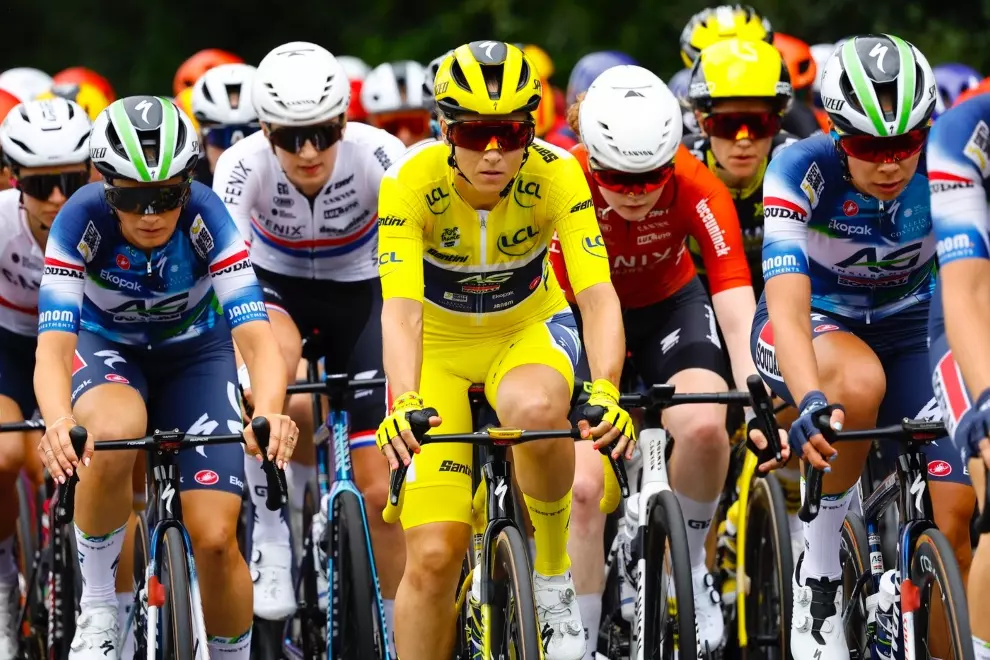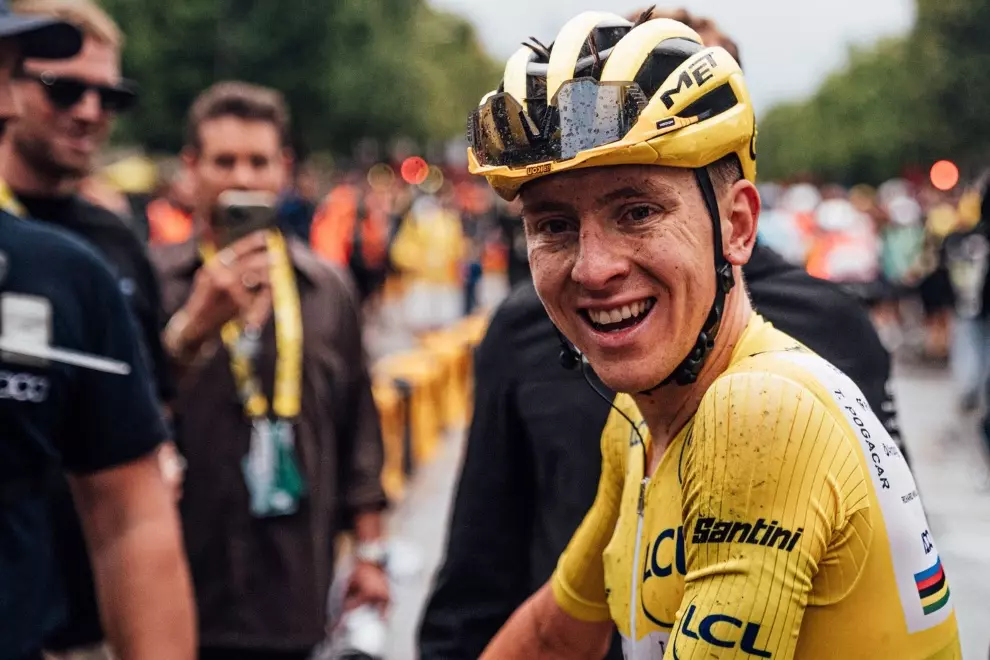He and fellow Spaniard Carlos Rodríguez (INEOS Grenadiers) left the Dane behind with 16 km left to race and powered up the category 3 Urkaregi (5 km @ 4.6%), finishing 41 seconds ahead of Skjelmose. Ayuso’s teammate Marc Soler, who was instrumental in setting up the victory, finished third in the stage, beating the hard-luck Skjelmose to the line in a sprint finish.
But fallout from the horrific stage 4 mass crash continues. As reported by multiple sources, Visma–Lease a Bike sports director Merijn Zeeman told Het Nieuwsblad that two-time Tour de France winner Jonas Vingegaard may not make it to this year’s Tour because of injuries he sustained in that crash, in which he suffered a broken collarbone, several broken ribs and a punctured lung. Cycling fans had been eagerly awaiting the race and Vingegaard’s ‘summit meeting’ with rival superstars Tadej Pogačar (UAE Team Emirates), Remco Evenepoel (Soudal–Quick Step) and Primož Roglič (BORA-hansgrohe).
“I received an update today from Jonas Vingegaard’s wife about how he is doing,” Zeeman said. “Relatively a little better each day, but he is still in the hospital. That says enough. At the moment, Jonas is not thinking about whether he will make it to the Tour or not.” He went on to say that, at a minimum, the setback has changed Vingegaard’s preparation for the race.
“Jonas will only go to the Tour if he is one hundred per cent,” Zeeman declared. “The first part of his possible preparation for the Tour will be cancelled in any case. Jonas will certainly miss the altitude stage in the Sierra Nevada from May 6. If he goes to the Tour, we will have to do it through a different route. If it doesn’t work, we will have to find another scenario.” No date has yet been set for when Vingegaard will return to training.
As for the race, Ayuso led the final GC standings by 42 seconds over Rodríguez, with Skjelmose completing the podium another second adrift. Throughout the mountainous final stage, the winner was able to ride in the slipstream of his 20-year-old Mexican teammate Isaac del Toro who finished seventh in the final GC. Farther up front, 21-year-old Igor Arrieta was helping Soler reach the leading group of riders. When Ayuso left Skjelmose on that final climb and reached the lead group, Soler was there to help him and Rodríguez make the winning break.
It was a stage of breathtaking racing and brilliant tactics that made fans almost forget what had happened two days earlier when a dozen riders crashed on a harmless-looking turn near the bottom of a descent, with some – including Vingegaard – falling into a concrete drainage ditch. In addition to Vingegaard, Evenepoel also broke his collarbone and his right shoulder blade, Jay Vine (UAE Team Emirates) sustained a fractured cervical vertebrae and two fractures in his thoracic spine and Steph Cras (Team TotalEnergies) came away with a right pneumothorax, several fractured ribs and two dorsal vertebral fractures.
It seemed at the time, from the images provided by Eurosport, that the bikes of the riders appeared to slip on the road surface. However, it has since been reported that there had been warnings about that particular curve because of tree roots distorting the road surface. Markus Laerum, CEO of Safe Cycling who provide safety consultations and support for cycling, told Sporza that Vingegaard had alerted him to that stretch of road. “It was a terrible image but above all very frustrating to see it happen,” Laerum said. “Especially because Jonas had already warned us six months ago about the descents in the Basque Country.”
Laerum went on to say that Vingegaard “shared a lot of insights with us. About the general dangers of the race but also about specific stages. And that’s where the Basque Country and this descent came up.” Safe Cycling then contacted the race organisers, “but we never received an answer.”
The danger of that curve was confirmed by Euskaltel-Euskadi rider Mikel Bizkarra who did not ride in the race but trains in the area. He told Rouleur: “On that road, there are a lot of tree roots under the asphalt that make the road very ‘bouncy’. You can’t see them but without realizing, you’re bouncing around and if you don’t have a good grip on the handlebars it’s easy to get blown up.”
If this is true, then not enough is being done to protect the riders from a sport that has grown more dangerous in the past few years. There are several reasons for this. The principal reason is the peloton is riding much faster than ever before, if only to keep breakaways from gaining a substantial advantage. I can’t remember the last time that a breakaway had a lead of 5 minutes or more. This means that many in the peloton will be fatigued, which leads to a drop in alertness and reaction time.
Also, bikes are faster and riders are stronger, younger and more ambitious. In addition, the added money in the sport has made it more competitive, with fewer riders now willing to give way on a crowded stretch of road. So far, little has been done to deal with this new situation. As a result, there are more crashes, and the crashes appear to have more serious consequences.
You cannot ask riders to ride more slowly or impose speed limits in a sport that is defined by speed. But you can create safer conditions by consulting with the riders about the dangers of a stage or race beforehand, and then convey their observations to the race organisers. Because the racing is only going to get faster. One very recent example of this actually working is the chicane added to the runup to the notorious Forest of Arenberg cobblestone section of the 2024 Paris-Roubaix, which made the peloton slow down before hitting those dangerous cobbles.




